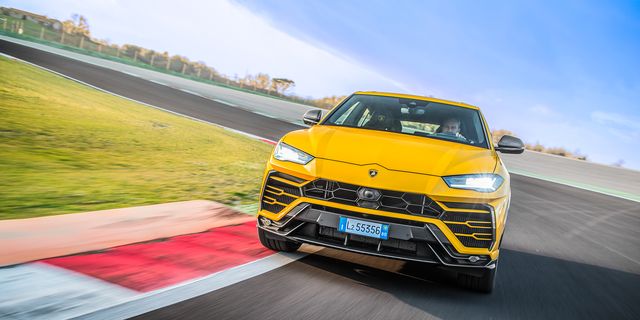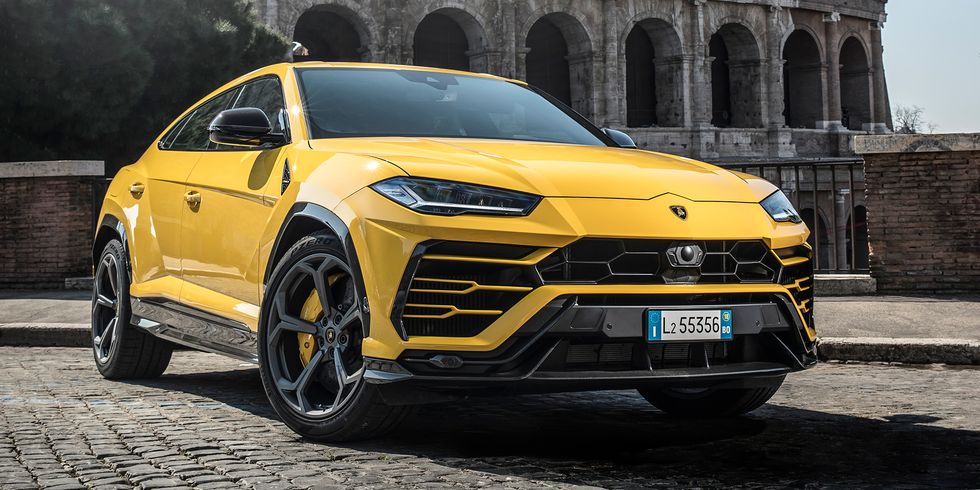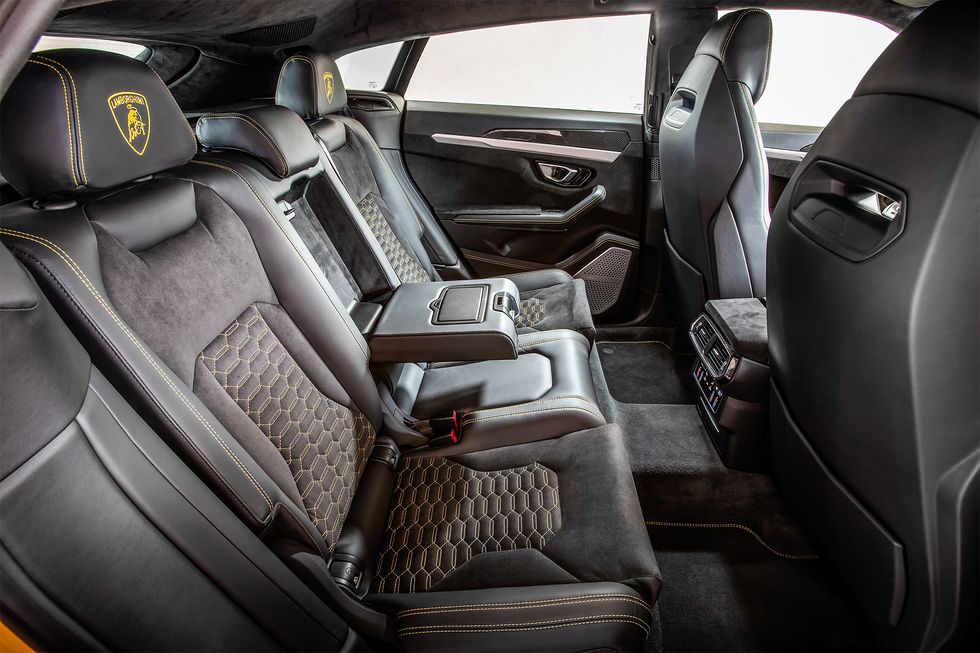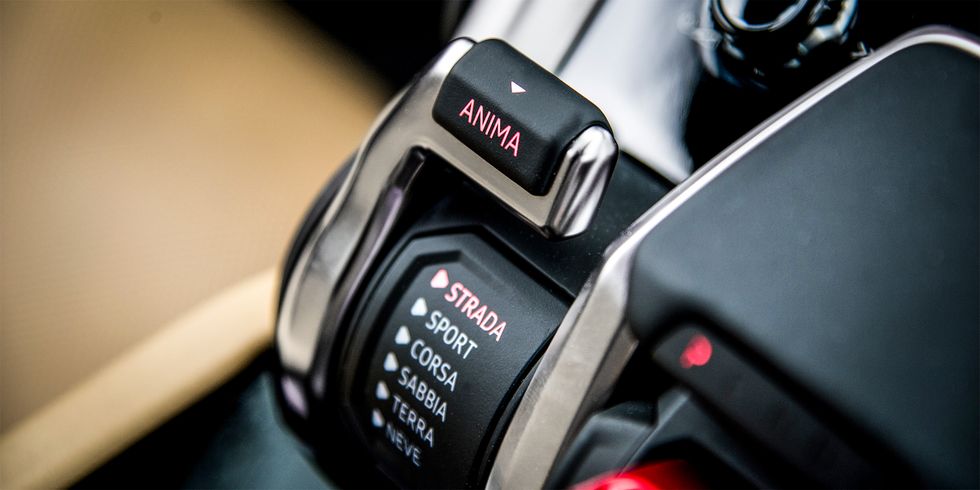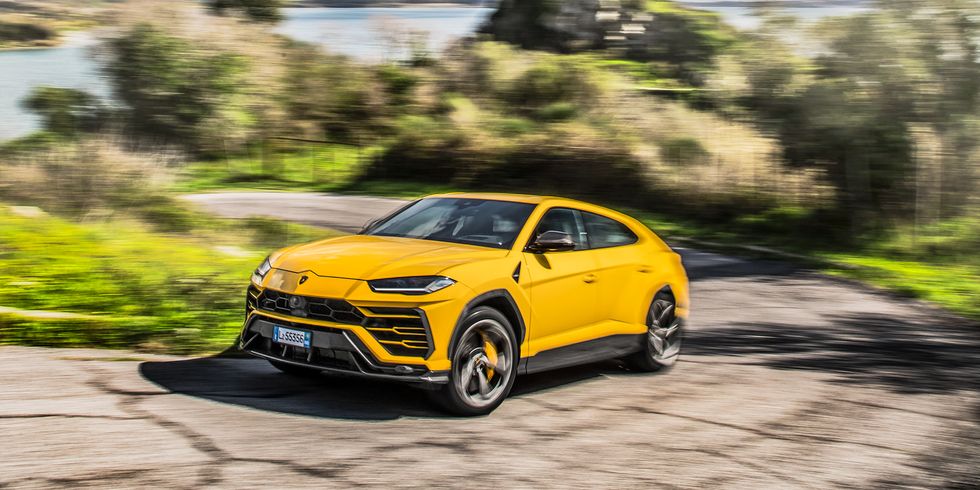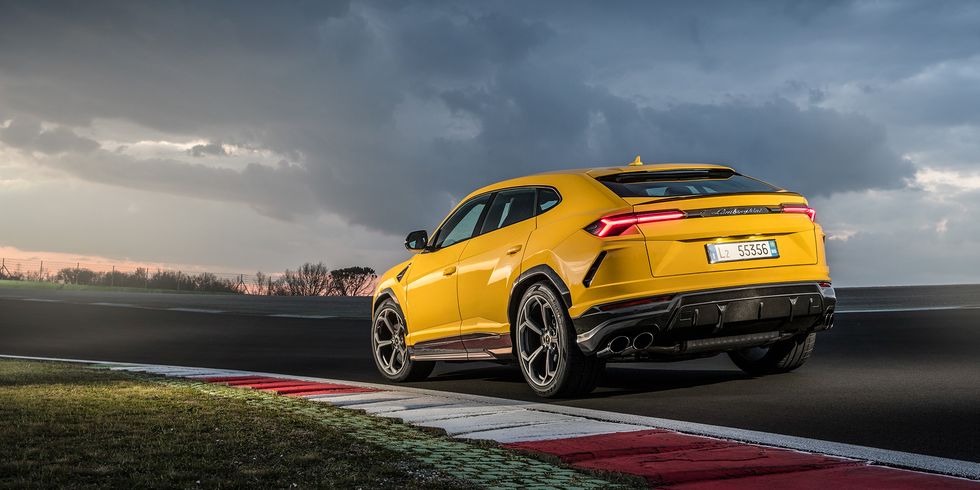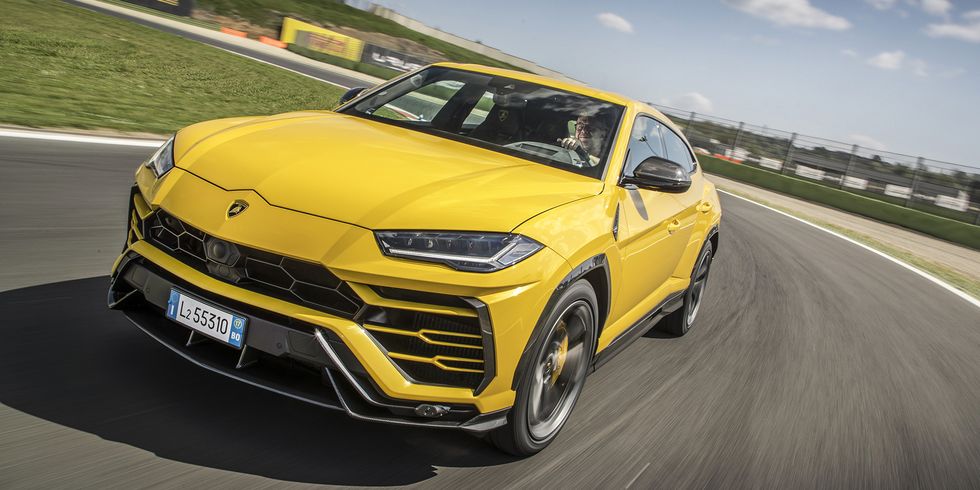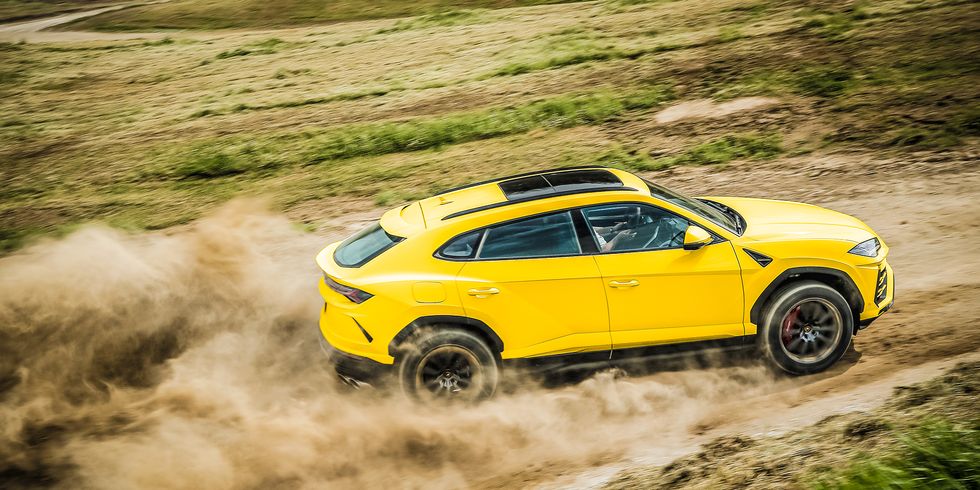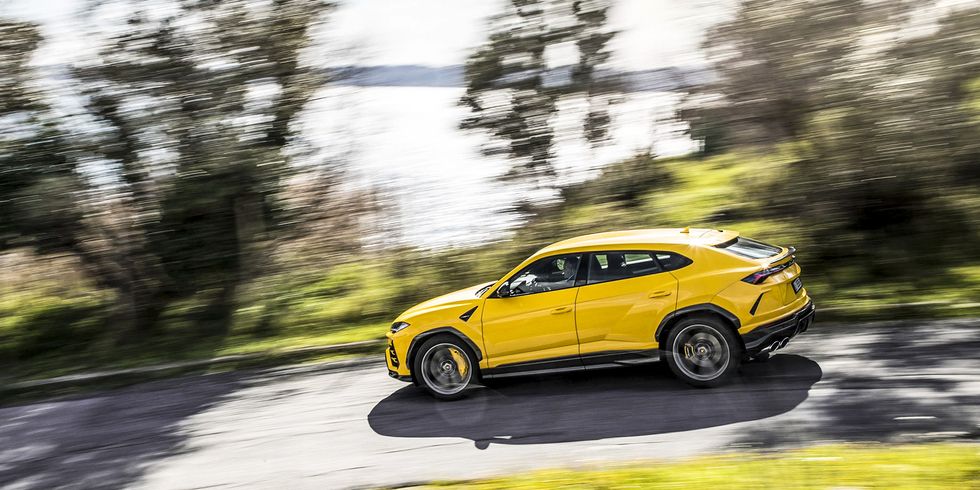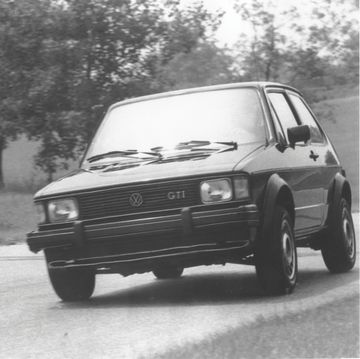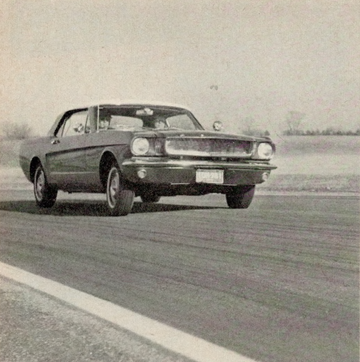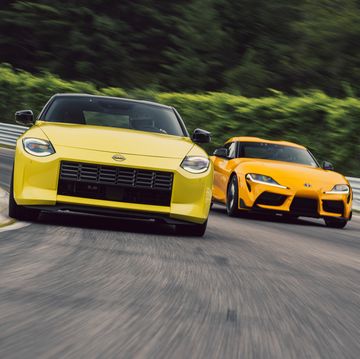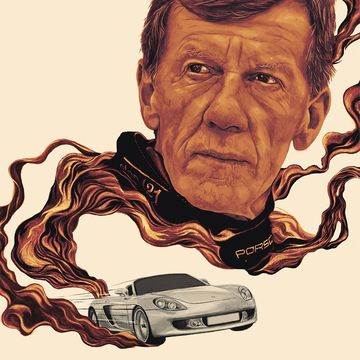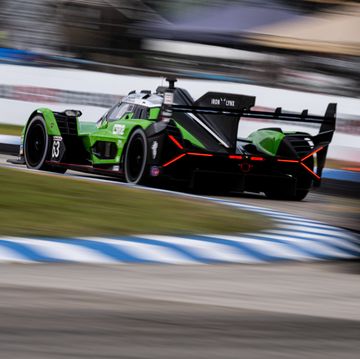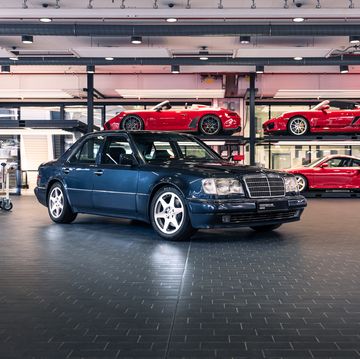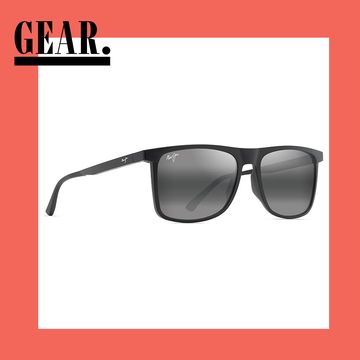YOUR IMPRESSION OF THE URUS WILL COME DOWN TO HOW much you romanticize Lamborghini. A dispassionate, engineering-minded driver would step away and proclaim the Urus a highly competent and speedy SUV— undeniably impressive as an entirely new undertaking for a company that sells a limited number of cars.
Such a person might also note that the Urus has many mechanical and architectural similarities to Volkswagen Group stablemates—a big reason it’s so competent out of the gate—yet still feels distinct.
On the other hand, for a person who innately and perhaps naively believes a brand is more than the sum of its vehicles, and who tends to consider a company’s history paramount, driving the Urus might cause unease. That person would be me.
I’m no purist. Lamborghini’s history is interesting but doesn’t quite rival some of the greatest automotive stories, like the Maserati brothers, the Ford family, or the singular Enzo Ferrari and his obsession with racing.
Nor am I bothered by the fact that the company has produced a utility vehicle. The masses want them, even though in this case, it’s actually only the one percent of the masses who can fork over $200,000. And don’t forget, Lamborghini created what is arguably the first-ever exotic SUV, in the fitful form of the desert-trouncing 1986 LM002.
Walk around the original LM002, though, and it still comes off as unhinged, with outrageous scale and dimensions. Not so with the Urus. Character lines pressed into its skin suggest muscular haunches and sucked-in sides. But those angles are mostly optical illusion. The sides of the Urus are nearly flat, and there’s not much extra bulge around the fenders. The hood is high and drops off as sharply as a cliff in a Wile E. Coyote cartoon.
Had the Lambo crew been given reins to base the Urus on a bespoke platform, it surely would look different. Instead, with the understandable necessities of cost efficiencies and German pragmatism, the Urus is based on architecture that underpins several close cousins, including the Audi Q7 and upcoming Q8, the Bentley Bentayga, and the Porsche Cayenne. That means there are a number of fixed points that could not be messed with, such as where the front wheel sits in relation to the windshield and the placement of the engine. Think of it like cheekbones and brow lines. Even with a different nose, chin, and eye color, there’s a family resemblance. The Urus differentiates itself through its width and having fenders so large, they accommodate optional 23-inch wheels.
The vents on the front fenders and rear aren’t functional. One real aero trick is on the underbody, where a flap sends air to cool the gargantuan, 17.3-inch carbon-ceramic brake rotors, replete with 10-piston calipers.
Ah, there’s a bit of throwback Lamborghini insanity: 10-piston front calipers! Lambo also claims that the Urus’s are the largest rotors ever put on a production vehicle.
The interior, with a slick dual-digital-screen center console and excellent build quality, is a delight. New tamburo (drum) controls, which allow the driver to tab through sport, track, and off-road modes, are intuitive and handsome. There is a real sense of drama here. The sheen of the materials and the usual Lamborghini details, like the missile flip-switch on the ignition and the hexagonal air vents, combine for a bit of theater otherwise lacking on the outside. One Urus we tested came with a mix of baseball-mitt leather, Alcantara, and carbon fiber. This is a company at the top of its interior game.
The block of the V-8—Lambo’s first with turbos—is out of the VW Group vaults, as is the ZF transmission case. Lambo added much larger twin turbos inside the cylinder banks, along with hotter cams and cylinder heads. The 4.0-liter puts out 641 hp and a knockout 627 lb-ft of torque at only 2250 rpm. All that power takes the brute to 62 mph in 3.6 seconds, Lamborghini says. Redline arrives at 6800 rpm—1700 rpm sooner than the V-12 in the Aventador S. Top speed is 190 mph. Just imagine the wind noise as it punches such a massive hole through the air.
We drove the Urus, riding on Pirelli P Zero Corsa tires, at the Vallelunga circuit outside Rome. We also did a loop on potholed lanes nearby, but the tires were regular P Zeros. (Pirelli Scorpions are available for off-road duty.) In the real world, speeds were frustratingly limited by Sunday drivers and routes through narrow villages. But the drive did prove a point: With the adjustable air suspension set to Strada (street) mode, the Urus absorbed lumps brilliantly, softening the brittle asphalt even with its 22-inch tires. Inside any other Lambo, we would have gone stir-crazy. But in laid-back mode, the Urus is resolutely grown-up.
Interestingly, it didn’t get a lot of love from locals, despite the bright-yellow paint. Perhaps they didn’t hear us. The Urus makes sufficient sound when pushed, mostly of the bass-laden, growling kind, but there’s no Venn diagram where the SUV’s exhaust note and the Aventador’s overlap. It isn’t the sound of a Lamborghini. Engineers point specifically, and heatedly, to California’s noise restrictions.
In a few places, when not stuck behind a warbling Fiat, we kicked the accelerator, and the V-8 instantly spooled up to lob us fast and hard down the road. Make no mistake, the Urus is genuinely quick. It’s just a different kind of quickness, coming from a wash of low-end torque, rather than that gradual build of a naturally aspirated engine.
By default, 60 percent of the torque is sent to the back wheels via a Torsen center differential, but the rear bias can be as much as 87 percent when circumstances call for it. The diff and traction-control settings modulate behavior in sand, gravel, and snow modes. The Urus also has mechanical rear-wheel torque vectoring and rear-wheel steering at its disposal, requisite tools of the trade when you want an oversized vehicle to handle like a smaller, nimbler one.
A track session in a fast SUV is a bit like kissing the “just friends” date you brought to prom. Fun, but not as much as if you’d asked who you were really crazy for. A track date with a Lamborghini is something to be excited about. Yet faced with the reality, you can’t help but wish that it were a session with a Performante, and not a high-riding crossover, no matter the horsepower.
Vallelunga has a long, discomforting straight with a dip that compresses the suspension. The Urus stormed through, flat out, with nary a tremor. Its He-Man carbon-ceramics soaked up the deep, hard braking before a compromise right-hander, which the SUV handled just as ably. It then downshifted right before touching the next curb and blasting down the following straight. There are two spots on the track that virtually beg you to overstep into them and suffer understeer. Even those it handled nicely. Steering is light and precise, though feedback is faint.
This amount of capability requires complex electronic systems to work—four-wheel steer, traction control, and active anti-roll bars. But none of that churn comes through to the driver’s seat. You just feel like you’re a highly capable driver who has no issues hustling some 4900 pounds of aluminum, steel, and carbon fiber through a complex of tricky turns.
I learned the most about the Urus while driving for photography. Most on-track photos come via countless passes on the same corner. Rather than go all the way around the (empty) track each time, I’d do a U-turn. The Urus’s turning radius is vast, so I’d manhandle it around and then sprint along a banked turn, going the wrong way, then hammer on the brakes before flipping around again.
Pushing the Lamborghini harder with each repeated pass—about 25 in all—several things became evident: The first was the tenacious grip and overall stability, which allowed the Urus to bang through turns as if it were a much lower, lighter sedan. More specifically, what leaped out was its ability to handle lateral loads, especially on the banked turn.
Credit goes to the Pirelli Corsas and their sidewalls, a true feat of engineering. But the greatest and most effective bit of kit on the Urus may be something we never actually see: those active anti-roll bars. This technology comes from Porsche, and it requires a 48-volt electrical system to power two separate electric motors. Under these demanding situations, the anti-roll bars stiffen to keep the Urus remarkably flat.
They can also decouple for off-road driving, to increase wheel articulation and keep the tires in contact with the earth in off-road situations. Lamborghini gave us a brief taste of the Urus’s off-road chops by carving a looping, rallycross-style track around Vallelunga’s perimeter. It was made of soft dirt and designed to carry a modicum of speed, with sections that required hard braking. The layout was telling—even the off-piste driving was intended to be hard and fast. Rock crawlers need not apply. You won’t see the Urus on the Rubicon Trail.
With the SUV set to Terra (off-road) mode and a nervous Italian co-driver in the passenger seat, I kicked dirt up and down the hills. The Urus was surprisingly competent: just brake early and turn in early, then apply throttle to get the rear end to slide. Traction and stability control stayed out of the way, and the brakes worked really well.
LAMBORGHINI ENTERING THE CROSSOVER FRAY only fuels the argument about whether these high-riding, heavy vehicles can be deemed proper performance cars.
Simple answer: yes. Its muscle more than qualifies. If you’re the type who demands Lotus purity, then the Urus surely falls out of that paradigm. But then, so does the BMW M5. And the Urus is at least as enjoyable to drive as the last-gen M5. I can imagine taking it on a long over-land trip, perhaps with mountains at one end, an ocean on the other, and hundreds of miles of dirt and gravel roads in between.
The deeper question is whether that’s enough. Lamborghini calls the Urus the “world’s first super sport-utility vehicle.” Yet that benchmark is already quite high. The BMW X6 M was one of the first track-oriented SUVs that left us grasping for answers. How had BMW mitigated the higher center of gravity and all those troublesome pounds? Since then, the wonderment has dissipated. We’ve driven many other fast SUVs, including the 550-hp Porsche Cayenne Turbo and the 505-hp Alfa Romeo Stelvio Quadrifoglio, which somehow managed a 7-minute, 51.7-second dash on the Nürburgring.
The Urus, while impressive, doesn’t blow past those vehicles with its performance. Nor does it fry your senses as would an Aventador. And that is what’s bothersome. So far, 68 percent of orders have come from customers new to the brand. If the first Lamborghini you drove was a Urus, you wouldn’t experience any of the noise, the sensationalism, the tear-your-face-off nature of a Countach or a Huracán.
For a half century, Lamborghini has stood for what is different. The company championed madness—snarling, mid-mounted V-12 spaceships with outlandish designs. They were always audacious. And we loved them for it.
Which brings us back to that driver who wonders whether the Urus, good as it is, stands for its brand’s core values. That person would likely say no.
